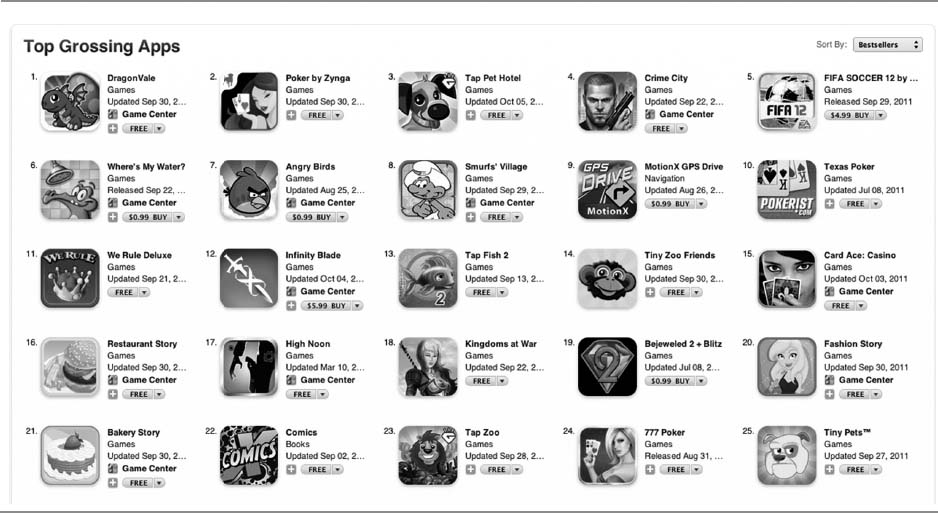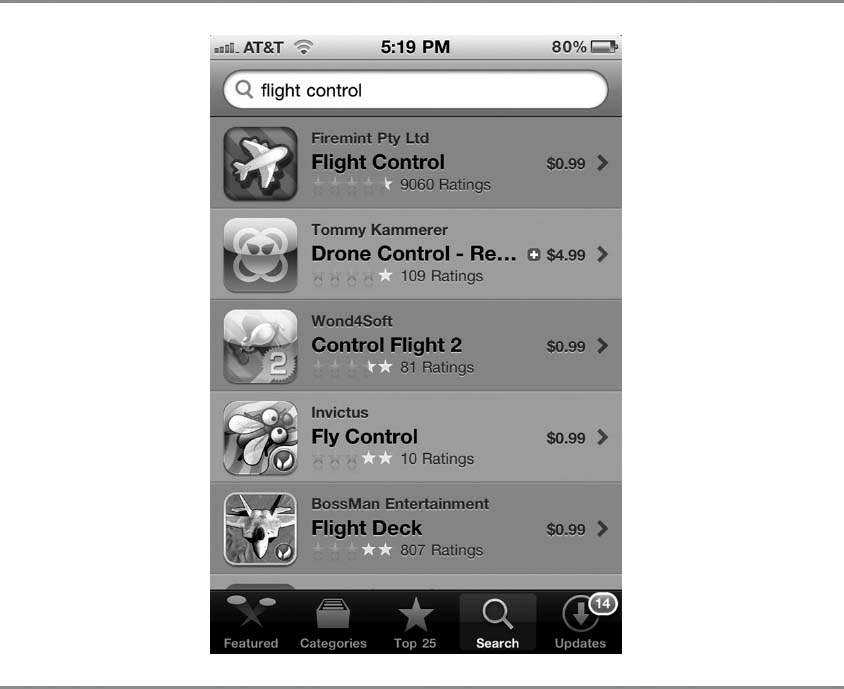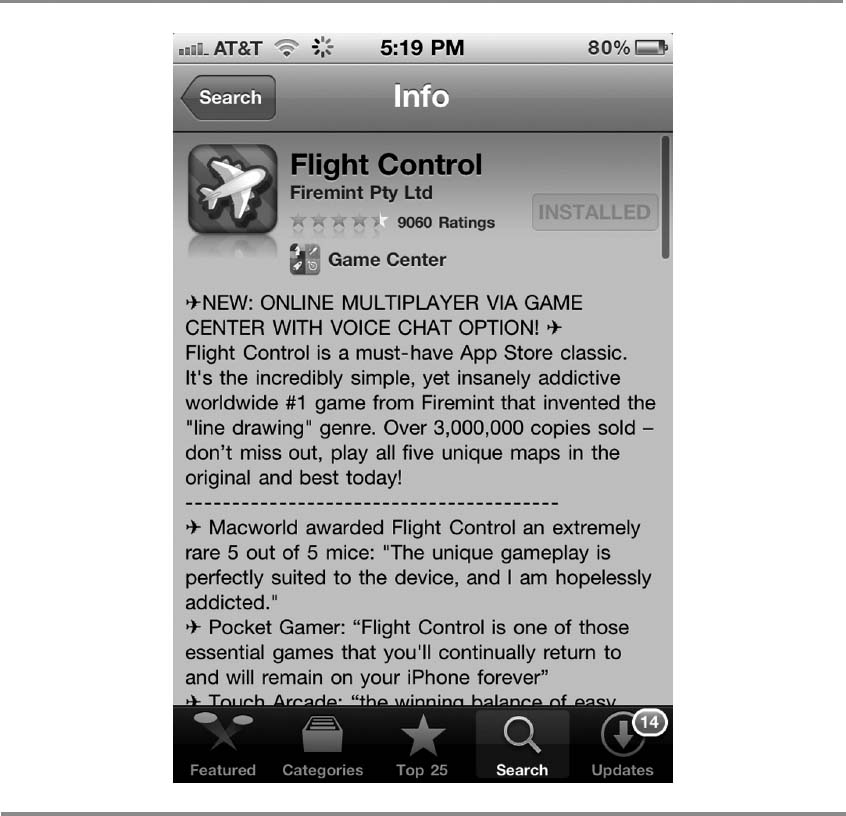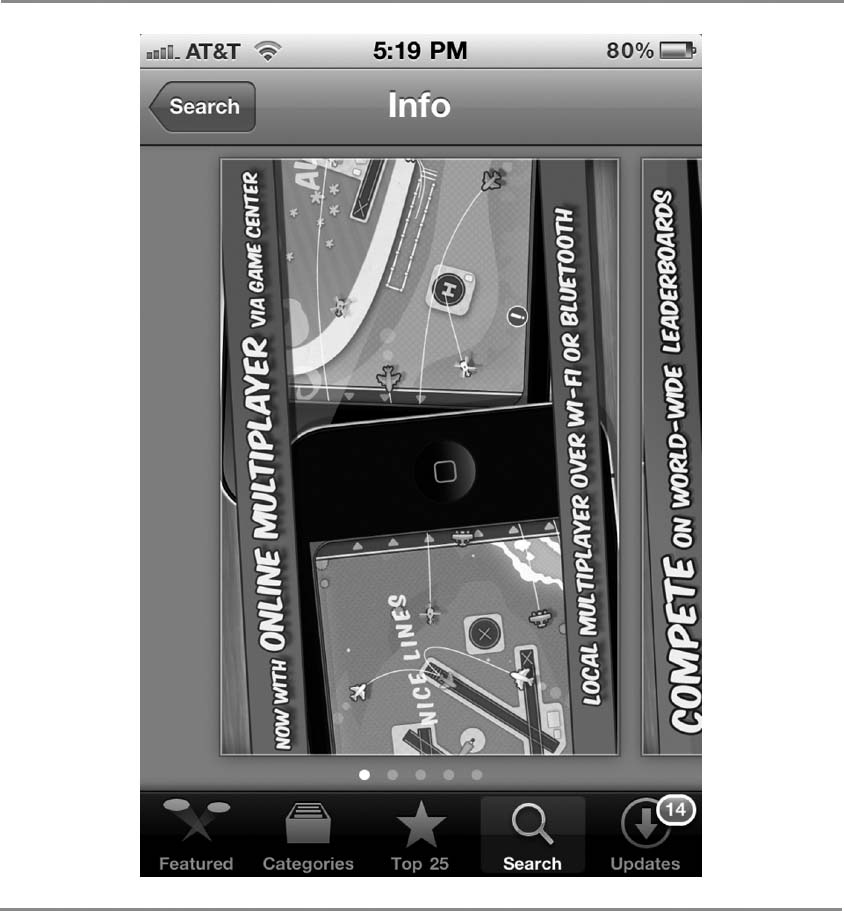Discover the New World
The App Store
The real voyage of discovery consists not in seeking new landscapes but in having new eyes.
—Marcel Proust
“Happy Friday,” the bank teller said.
“Thank you. This is one of the best days of my life!” I said, smiling from ear to ear.
Cashing the $73,322 check gave me one of the best feelings I had ever experienced. I was ecstatic because it was more money than I had made throughout my entire life, and it was in one real estate deal.
That deal meant more than just money to me. It symbolized victory and a new life with new opportunities. I had worked my butt off, struggled, through blood, sweat, and tears to realize the American Dream that I grew up fantasizing about.
While most guys in their early twenties were partying, chasing girls, or vegging out and doing nothing, I found myself reading books, studying local real estate markets, learning from successful real estate investors, and of course chasing girls. I was hoping to emulate them and live the life they were living. Holding the check that day after the closing, I was grateful. All the hard work had paid off, and I had made it.
On January 6, 2006, at the age of 24, I moved back to Myrtle Beach, South Carolina, where I had gone to college, to start a real estate company, thinking I had this industry on lockdown.
Everyone was making money in real estate, and hardly anyone anticipated that the party would end. Less than a year later, without warning, the market tanked, and everything I had planned and worked for fell apart.
When it crashed, all my efforts turned into a pile of bills minus the money to pay them. I burned through the money I had made on my first real estate deal in seven months and had no money left to weather the downturn.
Desperate, I looked to one of my mentors who lived in New York. I was positive he would have the answer, and I became furious when his magic pill was this: “Do whatever you were doing while you were succeeding because I think you have forgotten what you worked so hard to learn.”
What the hell was that supposed to mean? I thought. Two weeks later, I was brushing my teeth, and all of a sudden, like someone coming out of a coma, I had my “aha” moment.
I realized I had been looking at the market through the lens of a real estate business owner instead of through the eyes of a customer. I had found success earlier because I became obsessed with researching the market and thinking like customers, meaning the homebuyers. My ability to understand the market had always given me a competitive edge.
I realized that even in a down market, Myrtle Beach was a transient place, and people were still looking for places to live in. I had to figure out where, what kind of homes, and how to find those buyers.
I remembered that when I bought my house, I wanted to be in the best area, with good schools and near the beach. I figured that other people must have specific needs as well, and there must be data that would tell me which areas had the highest number of transactions. So, I researched and found the hottest, most desirable subdivisions that were doing well compared to the rest and decided to park myself there.
My mentor had been right. If these are the hottest properties, I then asked myself, Who's selling houses there, and how are they doing it? What are they doing to attract buyers and/or sellers?
It turned out that the top real estate agents in those areas were finding buyers through small newspaper ads, and were using specific language. That was it. I emulated their marketing strategies and found buyers. I was able to cash in on those buyers and keep my business alive. When the market changed, I trained myself to be present and listen, so I could change strategies and go with it versus fighting it.
The real estate downturn lasted longer than I anticipated, stretching my finances thin, and though it was hard, it was a valuable experience I am grateful for. It was the battlefield where I developed skills I needed to survive in business. I use the same strategies with my app business with fewer headaches. I look at the big picture, research the market, think like a consumer, and emulate the most successful players.
The good news is that you can avoid the battle scars and use these strategies from day one. Listen to the market, and follow the trends. As an appreneur, the more you understand customers and give them what they want, the bigger and more consistent your reward will be.
In this chapter, I take you on a tour of the App Store, so you can navigate this powerful resource like a pro. You'll learn how to spot which criteria people are using when buying apps, and turn the App Store into your own personal ATM.
GATHERING INTELLIGENCE
As with any business, your success will be directly related to your understanding of the marketplace. The App Store is the marketplace of the app business so to understand the market we have to study the App Store. This seems rather obvious, but you won't believe how many developers I meet that don't understand this concept. They don't watch the market, follow the most successful apps, or figure out why those apps are successful.
Most of my success comes from my knowledge of the market. It's as easy as that. I make it a point to check the App Store every day. It's a daily process to see which apps are working and which ones are not. This means downloading them, playing around with them, and seeing how they are marketed.
The more time you spend with apps, the better you'll understand the common traits of successful apps and what users are looking for. The more you think like the customer, the greater your success will be. You need to become an app addict if you want to be a successful supplier. This mindset has been the lifeblood of my success.
For instance, a little while ago, I looked at the top grossing apps, and I noticed a big change. Until recently, many of the top grossing apps were paid apps, but a lot of them have become free (see Figure 3.1). When I noticed this trend, I asked myself what was happening and why. I took a closer look at the top-grossing free apps. I downloaded several of them and saw that developers were beginning to take advantage of in-app purchases by offering lots of additional, useful paid features within the free apps. Apple had introduced in-app purchases as a tool for developers to sell content within their apps some time before that, but it took a while for developers and users to take full advantage of them. Users love that the apps are free, and they can pay for additional features if they want them.
Based on this info, I knew where the action was going and that I had to adapt my business model. I called my developer and started to update my apps so I could increase revenue through in-app purchases. This has been a huge shift in the market, and without monitoring the market daily, I would not have picked up on it.
FIGURE 3.1 Top grossing apps: 19 out of 25 are free.
I see other top developers watching and adjusting to the market constantly as well. The more present and informed you are on what's happening in the marketplace, the quicker you can adjust and capitalize on changing conditions.
READ BETWEEN THE APPS
So, how do you keep pace with the market? The best way to do that is to check out Apple's cheat sheet and study it constantly. The App Store displays the top paid, the top free, and the top-grossing apps (the apps that make the most money including free apps), almost in real time (see Figure 3.2). Apple provides the same lists in the individual app categories. This info is golden because it tells us volumes about the market. The best part is this information is accessible at any moment unlike the market info of any other industry.
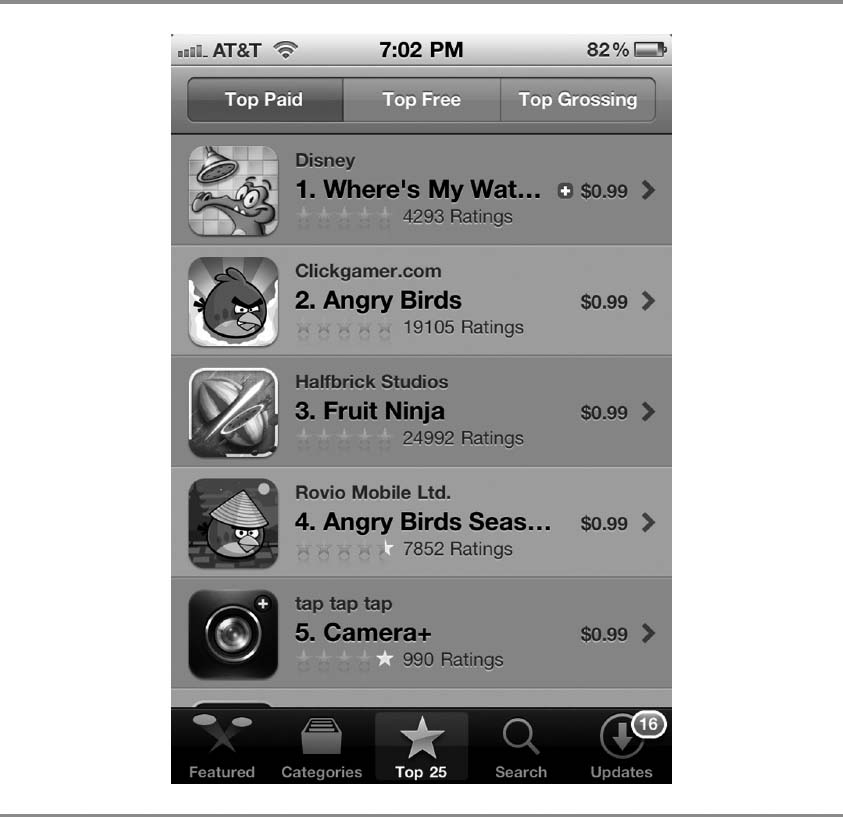
FIGURE 3.2 Top 25 paid, free, and grossing apps.
Review these charts frequently, and look for trends you can take advantage of. That's what I do. This educates me about different pricing models and how successful apps are being designed and marketed. When looking at the market, these are some of the questions to ask:
- Why is this app successful?
- What is its rank and has it been consistent?
- Why do people want this app? (Look at the reviews.)
- Has this app made the customer a raving fan?
- Does this app meet any of my needs?
- Did I become a raving fan after trying it?
- Does this app provoke an impulse buy?
- Will the customer use it again?
- How are developers marketing to their customers? (Check out the screen shots, icon design, and descriptions.)
- What else can I learn from the company that created the app?
- What is the competitive advantage of this app?
Be curious, and constantly ask lots of questions. This will help you uncover clues to success. This research is simple, costs nothing, and is lots of fun. You will be downloading and playing games and testing other apps as well. Rediscover your inner child and have fun.
It's important to write down what you observe so you can use that information to your advantage. Instead of saying, “I think this is what's going to work,” or “My buddy told me this app is great so I'm going for it,” let objective data lead you. Few apps, if any, become successful by chance. After you do this for some time, you will develop an uncanny sixth sense for what works in the market and what doesn't.
Every second you spend with an app is part of your market research, which will make you more savvy and knowledgeable as an appreneur. Even as your business grows, keep learning about new apps. You can discover new ideas and different device capabilities.
When should you research the market? Utilize your idle time as much as possible. Checking the pulse of the App Store takes 5 to 10 minutes. In addition to that, schedule time to focus on your market research when in front of a computer. This will give you the ability to see more on the screen and more easily note any trends.
TWO TYPES OF APPS
Though you will find many categories of apps in the App Store, such as Games, Entertainment, Utility, and Productivity, only two types of apps exist: those designed for entertainment purposes and those designed for productivity. I am not referring to the entertainment and utility categories in the App Store. Instead, I divide apps into two groups because that simplifies the process of researching and understanding the demographics of app users.
Entertainment apps can range from action games, puzzles, and fake IQ tests, to gun simulators, prank apps, and many others. They offer fun, are mindless, and are usually used to pass the time as a wanted distraction. They usually require little effort or thought from the user.
The top-grossing entertainment apps aren't just action games like Angry Birds. They can be apps, like Talking Ben, in which an animated interactive dog repeats all of your words in a funny lower pitched voice. Another example is an app called Top Girl, which simulates a virtual world, that lets a girl walk around, get a boyfriend, buy clothes for him, and more. This isn't my cup of tea, but enough people love it and keep it highly ranked.
Another entertainment app that always seems to be one of the top five in the list of highest grossing apps is Tap Pet Hotel. Inside is a virtual world where the user has to care for a pet on a daily basis, paying to upgrade to feed or to teach the pet a new trick. This virtual world uses fake currency as its system of rewards, which hooks customers and makes them raving fans.
The ingenuity of the app lies in its deeper goal: hooking the user into returning.
I would never have guessed in a million years that a virtual pet hotel app would be as popular as it is. I would never have come up with it myself. This is a good example of remaining objective when judging whether an app could work. Keep emotions and personal preferences out of your decision making. I don't care how much success I have, or what I think I may know, I always let the data lead me.
As of this writing, people put the biggest premium on being entertained and letting loose with games. Seventy-five of the top 100 paid applications are entertainment apps.
Only 10 percent of the top 100 highest grossing apps are utility based. I think this uneven demand will remain for a while because of the entertainment focus of the iPhone user.
On the other hand, utility apps make the world more convenient, helping people with everyday tasks. Examples include apps that turn your iPhone into a flashlight, track diets, create grocery lists, perform currency conversions, or send voice memos as text messages. These apps significantly extend the functionality and usefulness of smartphones. Ever visit a new city, and have no idea of what to do, or where to get a decent meal? Well, within seconds, an app like Yelp can help.
Utility-based apps are becoming more prevalent as more established businesses are creating apps to meet the mobile lifestyle demands of their customers. These apps are designed to support a company's existing business and they are acting as tools for brand recognition. More companies are catapulting themselves into the mobile arena in hopes of gaining visibility and awareness. Apps are becoming the new website, and businessowners are recognizing the value and adapting quickly. This is why utility apps will continue to increase.
APP DISCOVERY
Another important nugget when it comes to making money in the app business is how easily customers discover apps. Without users finding your products, no sale can occur. Customers have two ways to find an app: through a keyword search on the App Store or through browsing its top charts. This means an app's visibility is determined by the app's search and top chart rankings. Therefore, you must do whatever you can to monitor and improve your rankings at all times. Most developers don't monitor their rankings consistently because they think they don't have any control over them. This couldn't be further from the truth. These rankings are so important that I use them daily to make crucial decisions about my apps.
Until recently app rankings were based on the number of downloads each app was receiving. Then Apple slightly modified its ranking algorithm to include other variables such as frequency and duration of app usage. After this change, frequently used apps like the Facebook app moved up in the charts.
The App Store analyzer, Chomp, publishes a series of metrics relating to both the App Store (Apple) and Android Market (Google) each month, which provides valuable insight into the mobile market (see Figure 3.3). Take note of these statistics, especially the interests and spending habits of consumers.
The illustration below shows that 83 percent of all searches on the App Store are based on functionality or a category, such as puzzle games or photography, rather than a specific name of an application. With more than 500,000 applications on the App Store, users probably know few, if any, apps by name. This type of insight can mean the difference between sleeping on your buddy's futon or living in a penthouse overlooking San Francisco Bay.
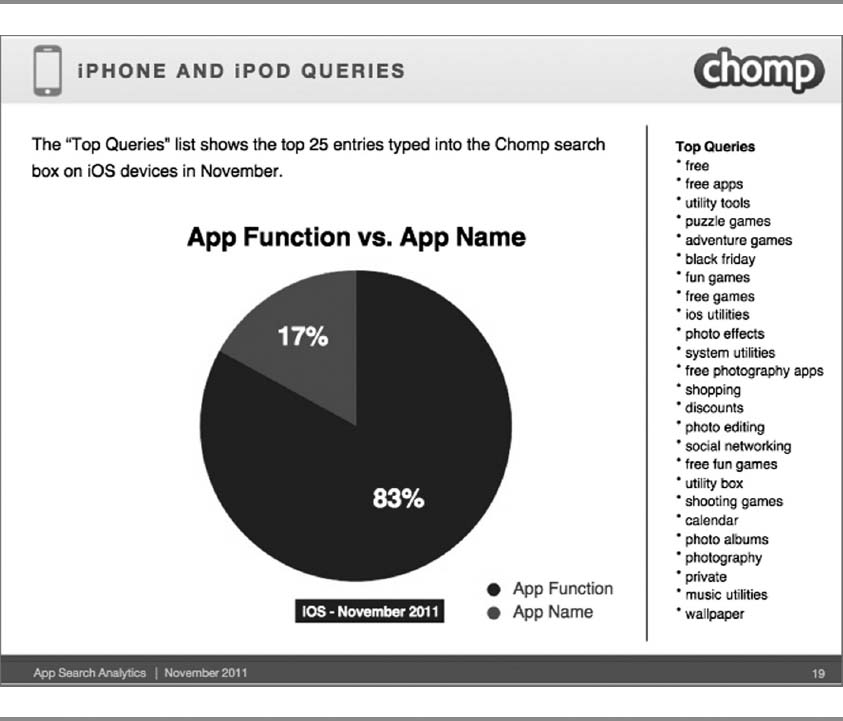
FIGURE 3.3 Chomp's iOS Search Analytics Report.
HOW DEVELOPERS MAKE MONEY
You won't have to be a cheesy used car salesman or wear a suit and tie to sell apps. This can be the easy part when it comes to your business. Apple has single-handedly revolutionized the world of software distribution. Once you create an app and publish it on the App Store, it becomes accessible on every iOS device in over 120 countries. (See Figure 3.4.)
The nice thing for developers is that these little 99-cent transactions can snowball into millions of dollars, especially when they happen around the world at all hours of the day.
Paid apps can cost anywhere from 99 cents to $999 per download. Most paid apps are 99 cents like the highly successful apps Doodle Jump or AppZilla, but a small number of apps like the bar exam prep app called BarMax or the exclusive VIP venues app called iVip Black go for as high as $999.
With such a large range, you might be asking yourself what's the best price point for an app. Those dollar stores you see all over the place have it figured out. Like discount stores that offer everything on their shelves for under a dollar, the sweet spot for paid app pricing is 99 cents.
This is the most lucrative price point for developers and I don't recommend selling apps at higher prices because the market share is too small. You might make money, but you are less likely to make big bucks, and it's risky.
Becoming a millionaire by selling millions of downloads at 99 cents is easier than 50,000 downloads for $20 each. The lower price gives you an easier sell, and the App Store top charts ranking you get from having more downloads gives you more visibility.
My goal is to help you create the lifestyle you want sooner than later, which means making as much money as possible and as quickly as possible. If you go the route of the 99-cent app, or even the free app model, you are more likely to have the market share and funds to support the lifestyle that you want.
Some high-end game companies, like Electronic Arts, charge more for its paid apps, such as $4.99 versus 99 cents. Unless you have millions of dollars in brand recognition, higher price points are not the way to go.
FIGURE 3.4 App stores in Europe.
Even though paid apps continue to be a major source of revenue for developers, free apps have surpassed paid apps as the primary source of revenue. Many developers have created their own money tree by offering free apps. Free apps can make developers a lot of money, and they are a great way to give the market a litmus test. You can find out if users have an appetite for your app and adjust your strategy accordingly.
Free apps can be monetized in a number of ways. Sometimes, they have basic functionality and are used to advertise their full-featured paid versions. This tool is so important that even the developers of successful paid apps, like Angry Birds, use free apps to funnel traffic to their paid apps.
Developers occasionally make their paid apps free for a limited amount of time to increase their app's user base more quickly and give the app a chance to go viral.
Another use is a full-featured free app that is monetized by advertising or in-app purchases. If users like the app, they'll continue to buy additional paid features within the app. As you can imagine, multiple sales within a free app can be much more lucrative for a developer then a one-time upfront sale.
Free apps fail when the customer gets bored and stops using them. An inactive customer is a lost customer, which means less money going into your bank account. Therefore, you must keep the user engaged by providing additional free and paid features and benefits. Allowing users to brag about their achievements on Facebook or other platforms gives an app a shot at going viral. This type of visibility gets more people interested in the app.
Songify is a great example of a free app that uses the techniques mentioned above. The app allows users to create songs using their own voice. The user's recorded voice is auto-tuned (think T-Pain) and layered over one of the soundtracks provided with the app. The result is a surprising masterpiece of fun music that turns the average shower singer into a Grammy award winner. This app keeps users engaged because they can create new recordings and mix and match them with different songs. The developers monetize and add more value to Songify by offering additional songs users can purchase for 99 cents. Users can post their creations and show them off to the world using Facebook, email, or Twitter.
We will go over app revenue models in much greater detail in Chapter 9, but for now, you must be aware of the power of free app monetization and ensure you have included free apps in your research.
THE IMPULSE BUY
Apps appeal to buyers for many reasons. One main reason so much money is spent on them, and why a recession is unlikely to adversely affect the core business model is because app sales are instantaneous micro-transactions. It's easy to act on impulse if instant gratification is only 99 cents and a five-second download away.
In the consumer's mind, spending 99 cents is not a big deal and doesn't require much contemplation, especially when people have purchased a relatively expensive device like a smartphone. In his blog, rocksaucestudios.com, John Gholson nicely paraphrases this behavior: “Ninety-nine cents is the perfect price for an impulse buy, and it rarely feels like a loss because a little digging in your couch cushions or car console means another dollar is right around the corner.”
The impulse buy happens in the blink of an eye, with a specific purchase process. I tested this with many users and found that, in the App Store, the average customer goes through the same six-step process when buying an app. Check out the following screen capture of the popular game, Flight Control, as you follow along:
- They discover the app by searching or browsing the App Store (see Figures 3.5 and 3.6).
- They check out the app's icon. People are visual. They like interesting icons that tell them what the app does, like a camera for a photo app. Flight Control's icon has a big plane on it and the cartoon vibe tips users off that it's a game.
- Next, the customers read the title and glance at the rating; Flight Control. The title says it all. “If you want something exciting, this is your game.” With 9,060 ratings and 4.5 stars, there's no question about the app's popularity.
- The customers' eyes then fall on the description, which they scan as they move down to the screen shots. (See Figure 3.7.)
FIGURE 3.5 Discovered through search.

- The screen shots provide great pictures and banner instructions serving as a visual app description. (See Figure 3.8.) Notice a pattern here?
- Usually they've bought the game after step five. If not, they may read a few reviews to ensure other customers liked it. At this point, they're thinking, “Not bad. I guess I will buy it. Everyone else did. And, heck, it's only a dollar.” (See Figure 3.9.)
Potential customers go through each part of this process mostly subconsciously, and each step has to funnel users to the next step, or they won't download the app. This process takes about 10 seconds.
FIGURE 3.8 Screenshots with banners.
HOOKING THE CUSTOMER
So, how do you to turn the impulse buyer into a long-term customer? It's well-known in the business world that it is five to seven times harder to get a new customer than it is to keep one. This is no different in the App Store. My tests concluded that you have to show consumers value within 30 seconds, or they will most likely exit your app and delete it forever. If they initially use the app longer than 30 seconds, it's much more likely that you will keep them as customers. As you can imagine, a long-term customer is worth much more then 99 cents because he will buy more of your apps, or purchase additional functionality within your apps, or even just click on your banner ads.

I call the 10-second impulse buy together with the 30 seconds to become a customer the 10/30 rule. It's incredibly important and I design all of my apps based on this concept.
TRAITS OF SUCCESSFUL APPS
Every success story differs, but the most successful apps share quite a few common traits. The following list gives you an idea of most of those traits. In the next chapter, I talk about how to use this list when you are brainstorming for app ideas.
When looking at an app, ask yourself if the app has these qualities:
- Fun/Entertaining—How much entertainment value does the app provide? Does it bring joy and excitement to users? Does it make them laugh? Like a great movie, a great app keeps users glued to their screens.
- Intuitive—The best apps are simple and easy to use. People can figure them out intuitively and quickly. Consumers shouldn't have to read extensive instructions to get started. Angry Birds and Doodle Jump are masters at this.
- Engaging—How engaging is the app? Apps should be as engaging as possible while also showing off the innovative capabilities of the device.
- Addictive—You can't put it down. You can't wait to get back to it. You're hooked. That's how the best apps win their users.
- Value—The app needs to give far more value in people's minds than what they paid. It should be something they use consistently and feel that they benefit from.
- Cross-cultural—It's important that apps appeal to the greatest audience possible. The more people who understand and use the app, the greater the likelihood of the app becoming a hit.
- Great graphics and sounds—The top apps are like eye candy. They've got great graphics that are a treat to look at. They also incorporate high-quality sounds.
- Viral—Word-of-mouth is a huge form of advertisement. When people get really excited about an app, they share it with lots of people. Why not try to take advantage of free marketing?
Below are some of the top paid apps that have stayed successful from day one. They share a lot of the common traits of winning apps mentioned above.
Doodle Jump
Doodle Jump has a cute little green creature that moves towards the top of the screen by jumping on ledges. (See Figure 3.10.) You control him by tilting your phone to the left or right. If you miss one of the ledges, the creature falls down and dies. It's a fun addictive game that amuses the likes of many.
The Doodle Jump app is a perfect example of a very simple, user-friendly, unique game that anybody can play. That's why it's been so successful. It's so easy that you could give your phone to anyone and they could figure it out immediately. One of the biggest mistakes most developers make is adding too much complexity to their apps making them confusing. Simplicity and ease of use is a common trait among almost all successful apps, and you must take note of this.
Fruit Ninja
Fruit Ninja is a game in which different types of fruit fly up into your screen at an increasing pace. (See Figure 3.11.) The goal is to slice and dice the fruit in half by sliding your finger across the screen at the correct place, using it like a ninja sword. With each piece of fruit you slice, you earn points. Bombs come up as well, so if you get too crazy swiping your finger, you hit a bomb and blow up. Game over.

A lot of highly successful apps such as Fruit Ninja, find ways of incorporating the iPhones innovations like its touch interface in a creative and fun way. This keeps the user engaged, and excited to keep playing.
SERIOUS FUN
When I first looked at the App Store, I was blown away when I saw that the number-one application wasn't about saving the world or revolutionizing the way we conduct business. It was the “Moron Test.”
Coming from a serious, traditional real estate background, I was suspicious about the wacky nature of the app market. But then it hit me: most iPhone users are looking for fun, not just productivity.
Because of this, I launched Fingerprint Security Pro when the App Store was still young, and I targeted a younger demographic. My idea was that they could prank their parents and friends—to get them thinking that the iPhone and iPod Touch really did double-up as a fingerprint scanner. One of the reasons it became viral was because of its re-use value; they all showed their friends, who bought it and showed their friends. It was also priced correctly—99 cents. At its peak, Fingerprint Security Pro was listed in the Top 27 overall paid apps. My company's name was Empire Apps and Fingerprint Security became the cornerstone of my App Empire.
The information in this chapter will put you on the fast track to building your own App Empire. In the next chapter, you will learn how to pick winning app ideas.
What I Learned
1.
2.
3.
Actions to Take
- Look at the range of apps in the App Store to see what the market is offering.
- Ask people what their favorite apps are and why.
- Look at successful apps and find out why they are hits, and how you can emulate them.
- Download at least 20 top apps to understand what appeals to customers.


